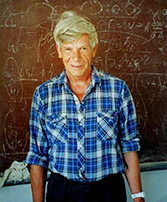Speaker
Description
Quantum field perturbation theory is widely used in theoretical physics. This gives excellent results in weak interaction models (e.g. QED). Otherwise, a few known first members of such a series are not enough and additional information is needed. This report is devoted to models of statistical physics and critical phenomena using the renormalization group approach.
Traditionally, critical behavior is described using renormalization group (RG) methods in the formalism of some regular expansion, usually the (4 − ε)-expansion. It is known that these series for calculating critical exponents are asymptotic, and a resummation procedure is necessary to obtain an adequate numerical result. This requires additional information. Usually, the parameters of the
asymptotic behavior of the considered series are determined using instanton analysis. This has led
to the use of various forms of Borel transforms.
As an addition to the standard quantum field perturbation theory, another perturbative procedure
was developed. In this approach, one can calculate the same Green’s functions, but in the form
of an expansion in an additional non-physical parameter for an arbitrary coupling constant. The resulting series converge. This report is devoted to models of statistical physics and critical phenomena using the renormalization group approach.

